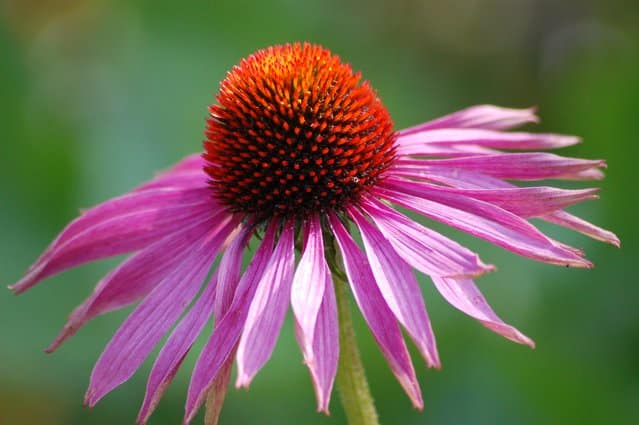When it comes to growing butterfly magnet wildflowers, the cream of the crop, so to speak, is the coneflower. Botanically known as Echinacea, this easy-to-grow perennial lights up the garden from late spring into early fall, all the while attracting a wide assortment of delicate winged beauties.
Purple coneflower (Echinacea purpurea) is one of the most common, although you’ll also find pink and even yellow coneflowers. The plants have daisy-like flower petals that surround a prickly cone-shaped seed head that butterflies and bees use as a landing pad when foraging. The plant is a perennial that goes dormant in the cold months and comes back in the spring.
This attractive wildflower grows up to 4 feet tall and 2 feet wide. It is heat and drought tolerant, making it the perfect choice for just about any garden situation.
 (Scascha/FreeImages.com)
(Scascha/FreeImages.com)
Coneflower Medicinal Uses
Originally discovered by the Northern Native Americans, Echinacea has been used for centuries as a medicinal plant that is said to boost the immune system and relieve cold and flu symptoms. Alternative health products using Echinacea are common. You’ll find Echinacea in a variety of forms, including pills, ointments, tinctures and extracts.
To have luck growing coneflower in your spring garden, keep the following cultivation tips in mind.
Locate in a full- to part-sun location with good air circulation. The sunnier the planting area, the more flowers the plant will produce and the more butterfly visitors you’ll have in your garden. (Butterflies require warm conditions in order to fly.)
Plant in well-draining soil. Though coneflowers are easy to grow and will survive in a wide variety of soils, they are wildflowers and do best in a well-draining soil. If the planting area contains clay soil, amend with compost and perlite or pumice prior to planting.

(Julie Bawden-Davis)
Water regularly. Echinacea grows best when given consistent moisture, but they will tolerate drought, as they have deep taproots that allow them to store water when things are dry. Water when the top inch of soil has dried out.
Feed occasionally. Like many wildflowers, Echinacea aren’t heavy feeders. Fertilize once in the spring when the plant comes out of dormancy and again midsummer with an all-purpose, organic fertilizer, such as a 10-15-15.
Cut and enjoy flowers. Coneflowers make a striking addition to any floral arrangement. They last a long time in water, or you can preserve them indefinitely by drying. Hang the flowers upside down by the stem in a cool, dry location until they are completely moisture-free.
Julie Bawden-Davis is a garden writer and master gardener, who since 1985 has written for publications such as Organic Gardening, The American Gardener, Wildflower, Better Homes and Gardens and The Los Angeles Times. She is the author of seven books, including Reader’s Digest Flower Gardening, Fairy Gardening, The Strawberry Story Series, and Indoor Gardening the Organic Way, and is the founder of HealthyHouseplants.com.

